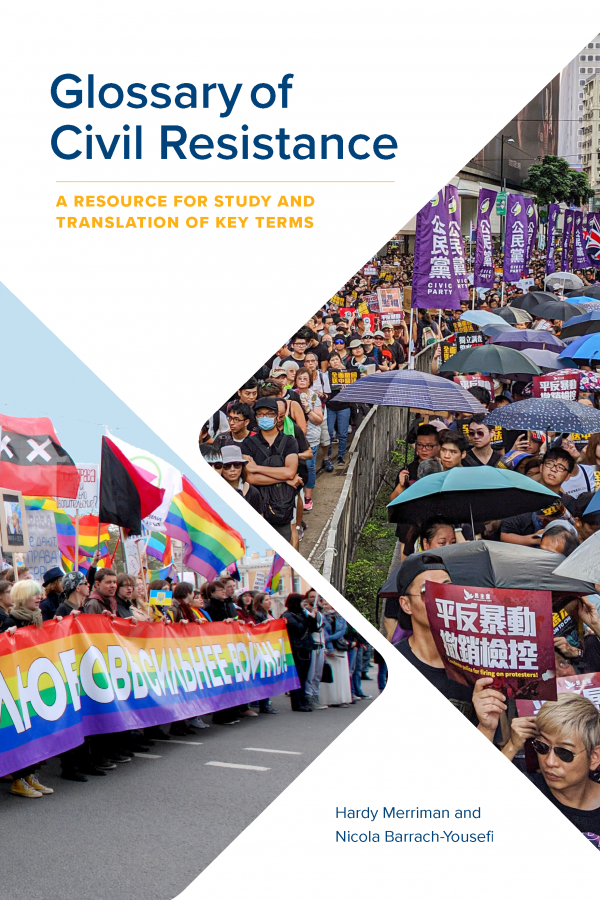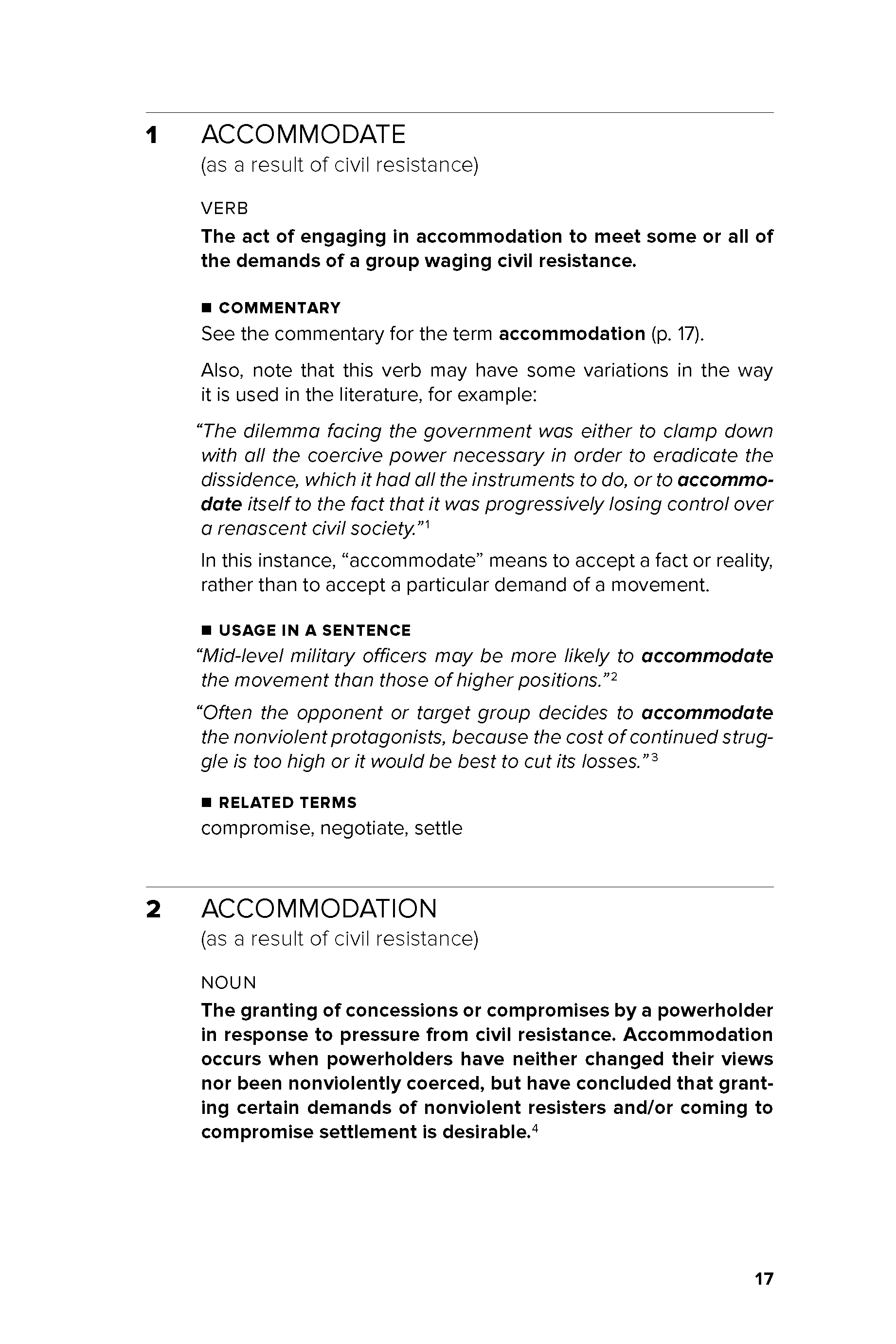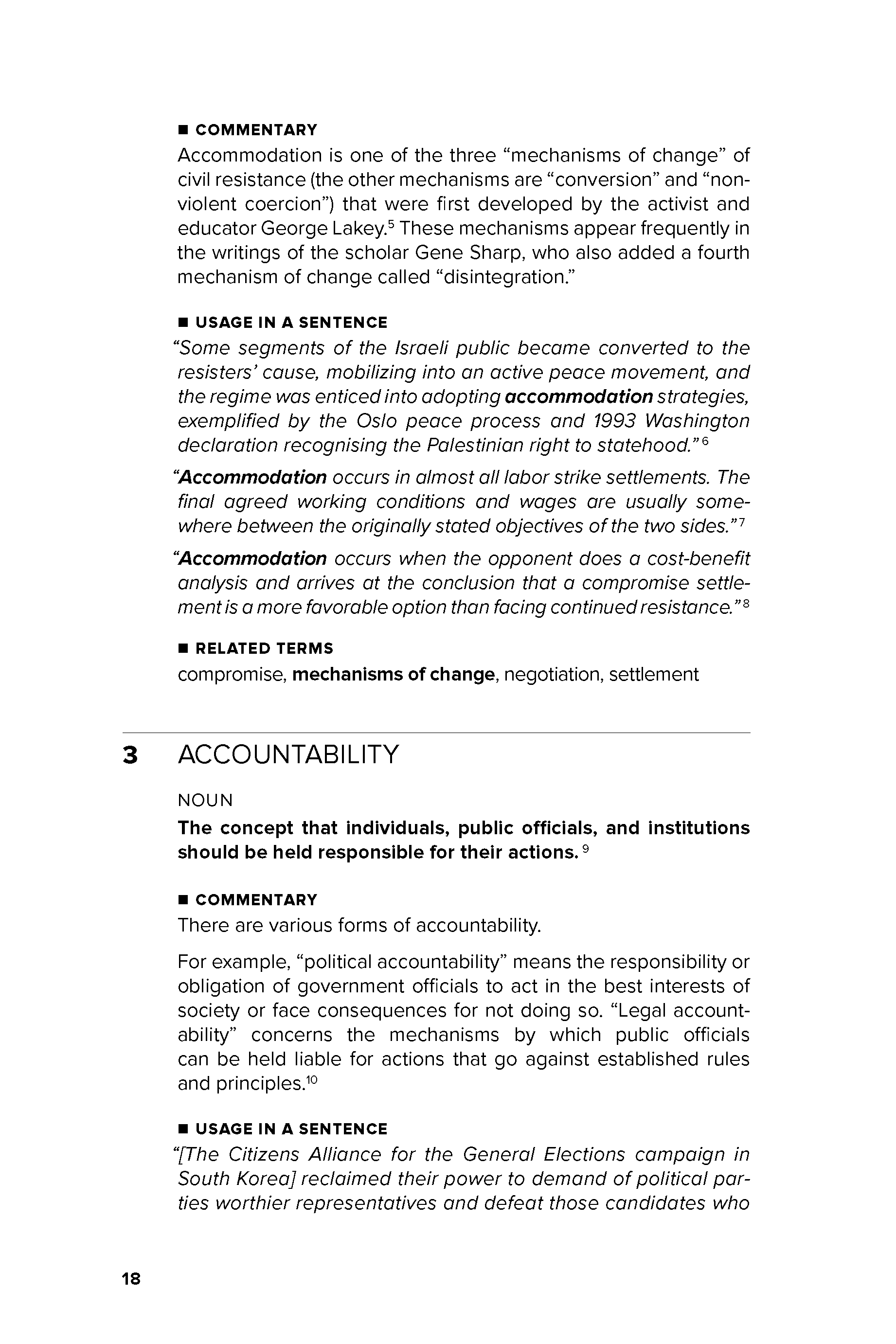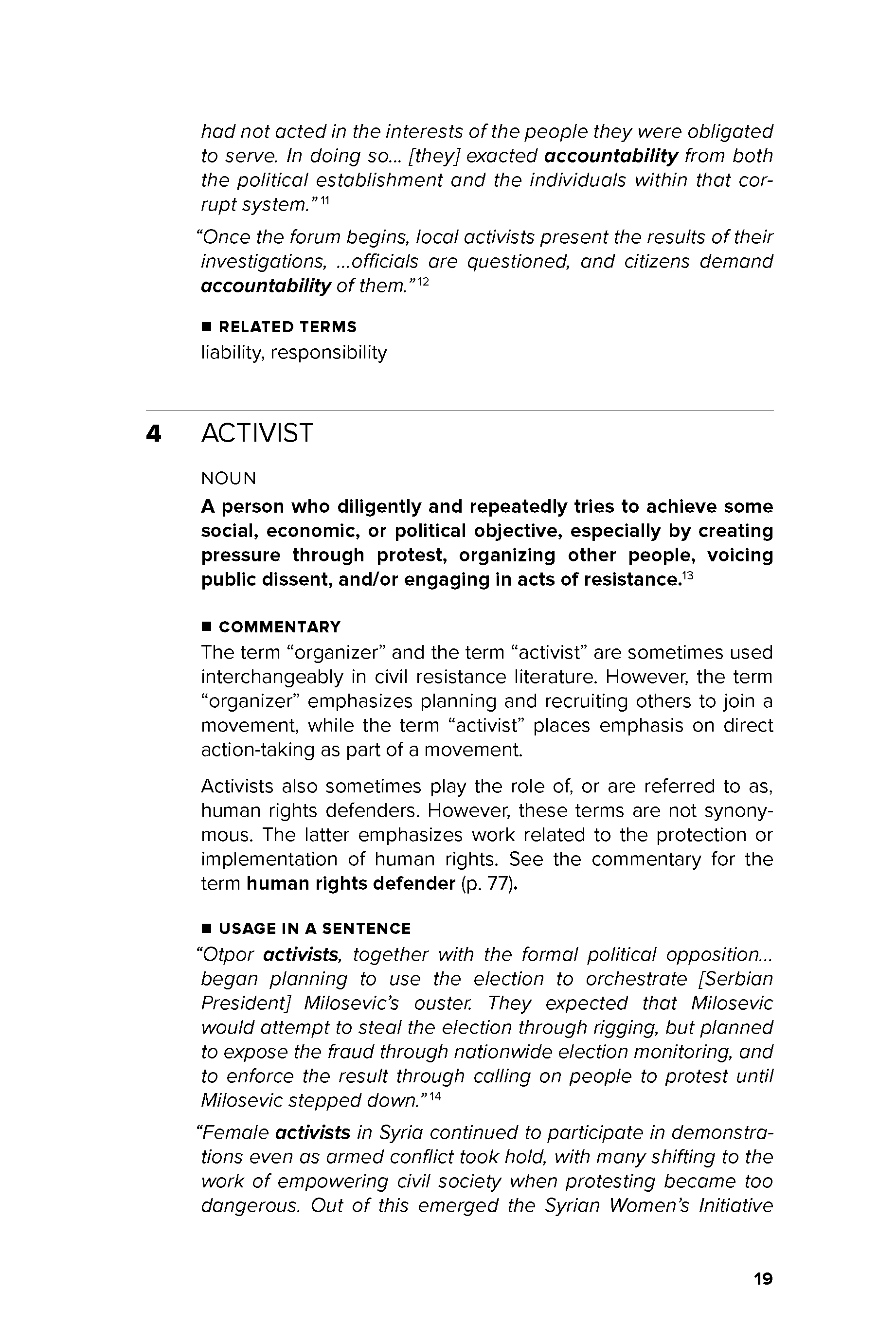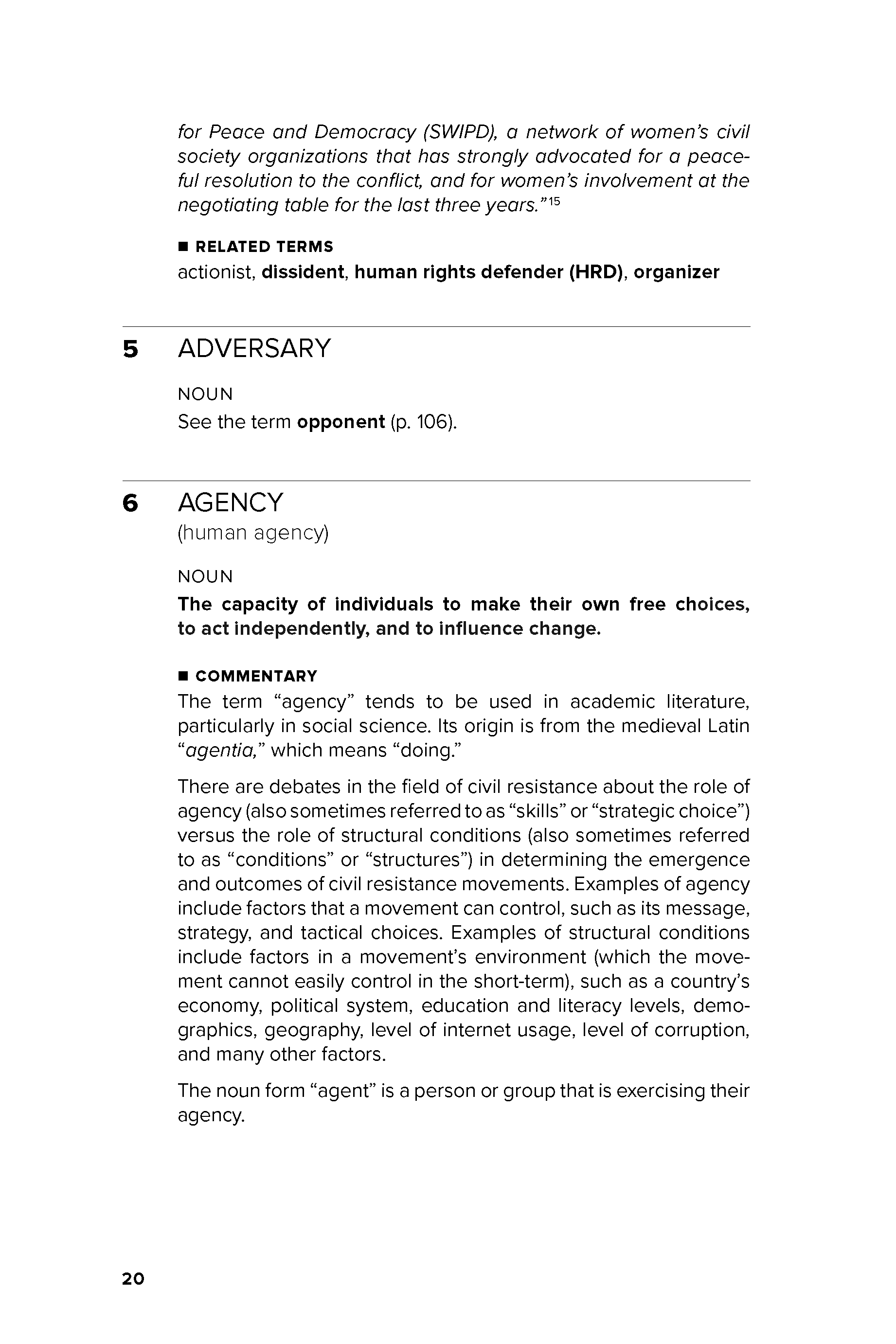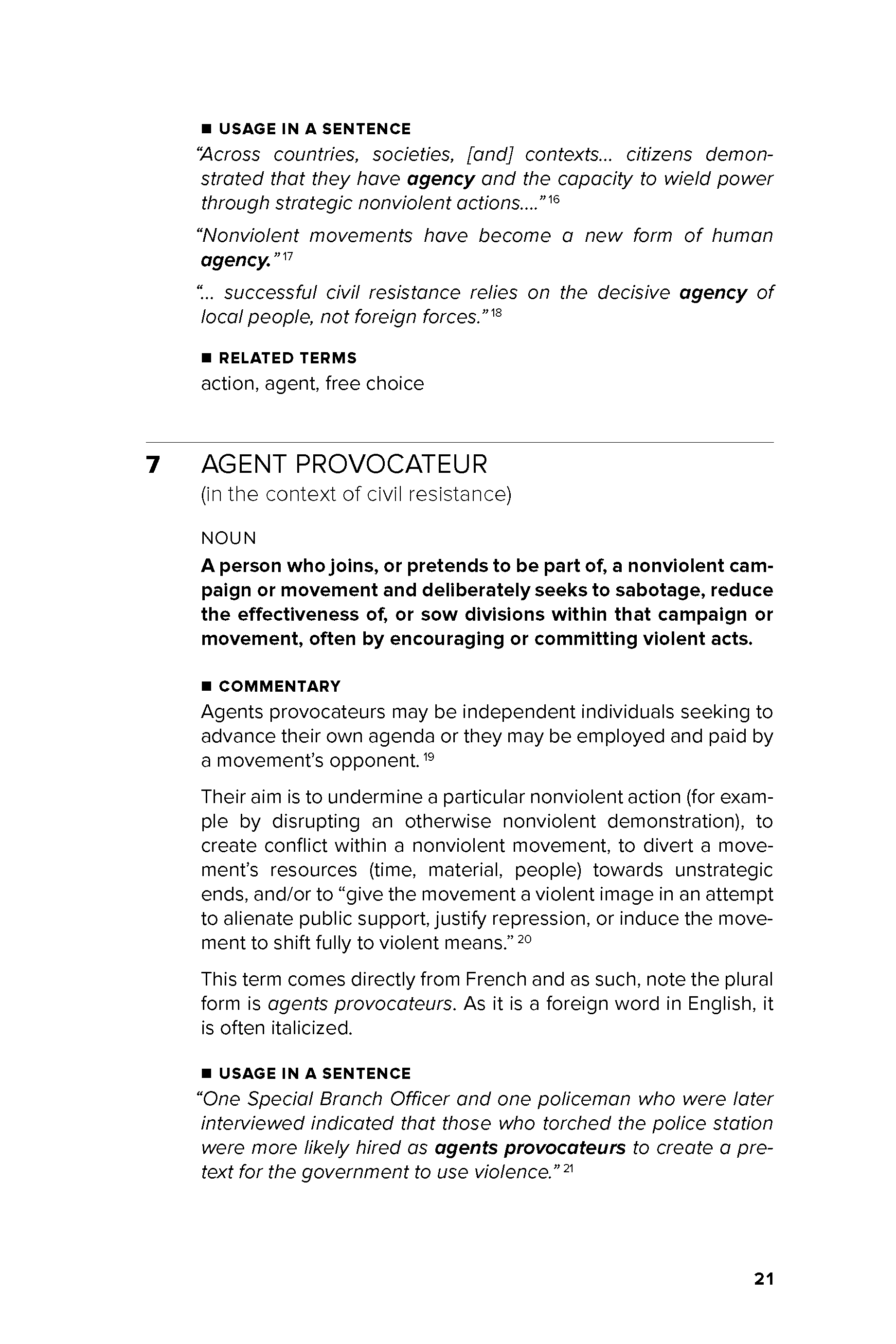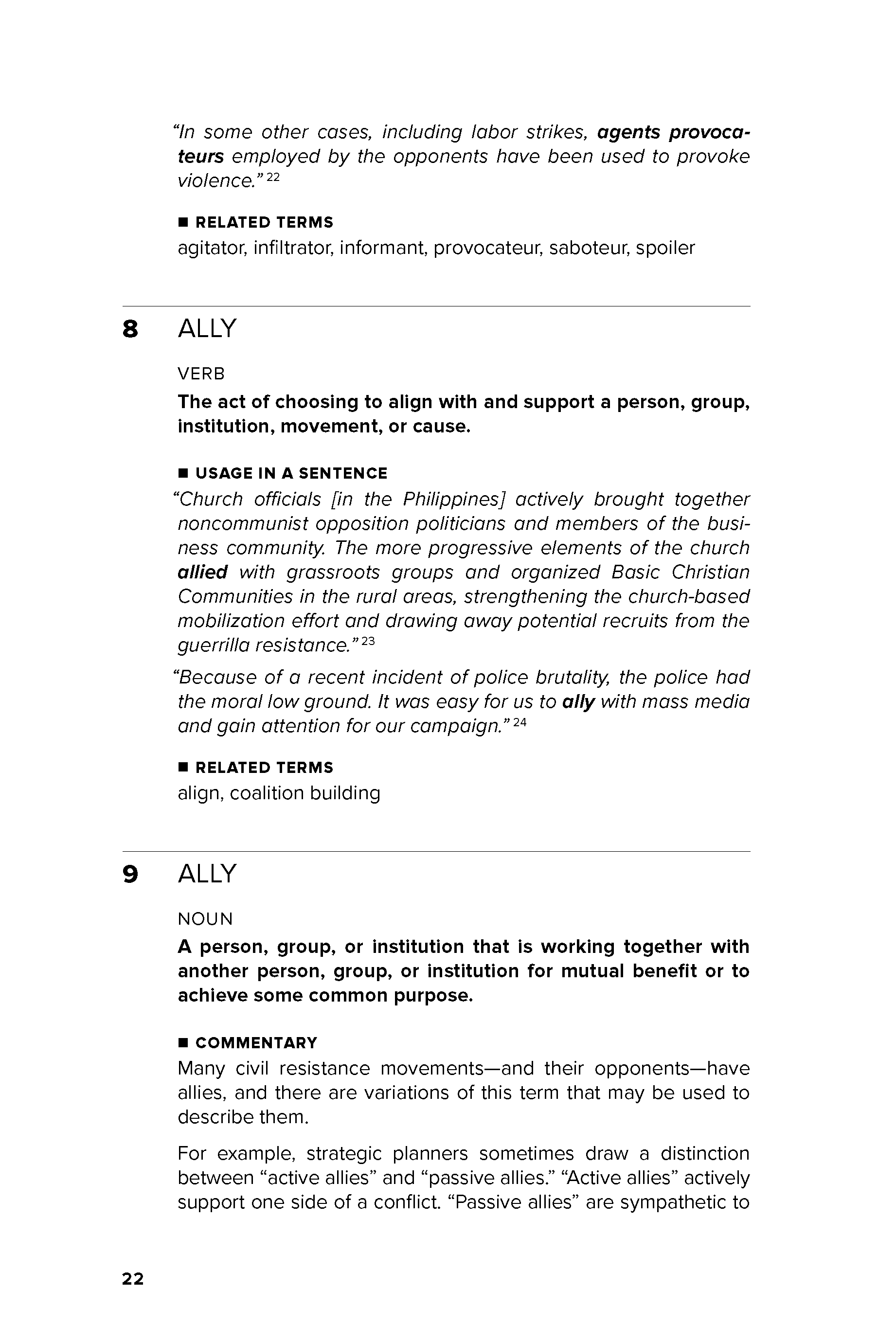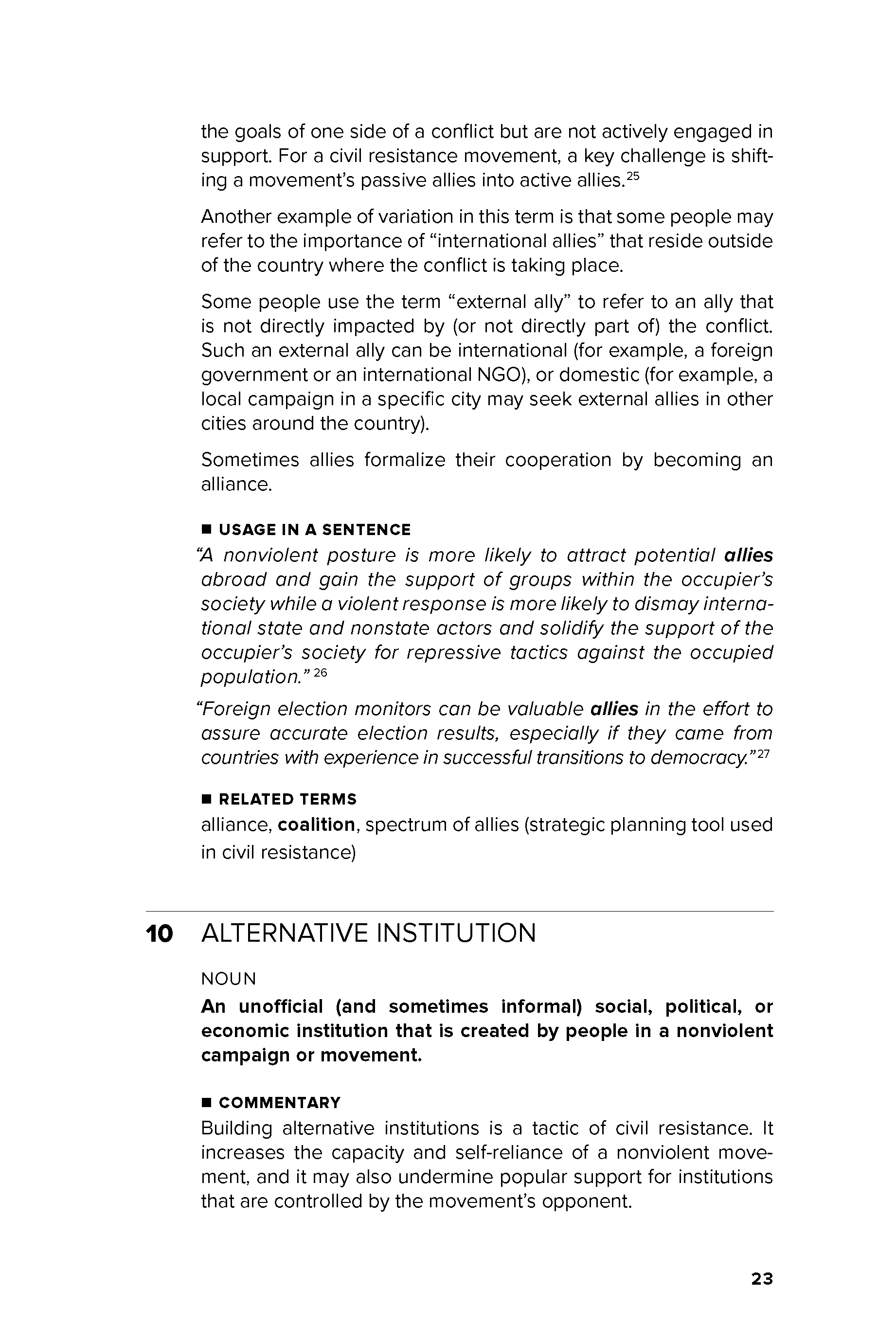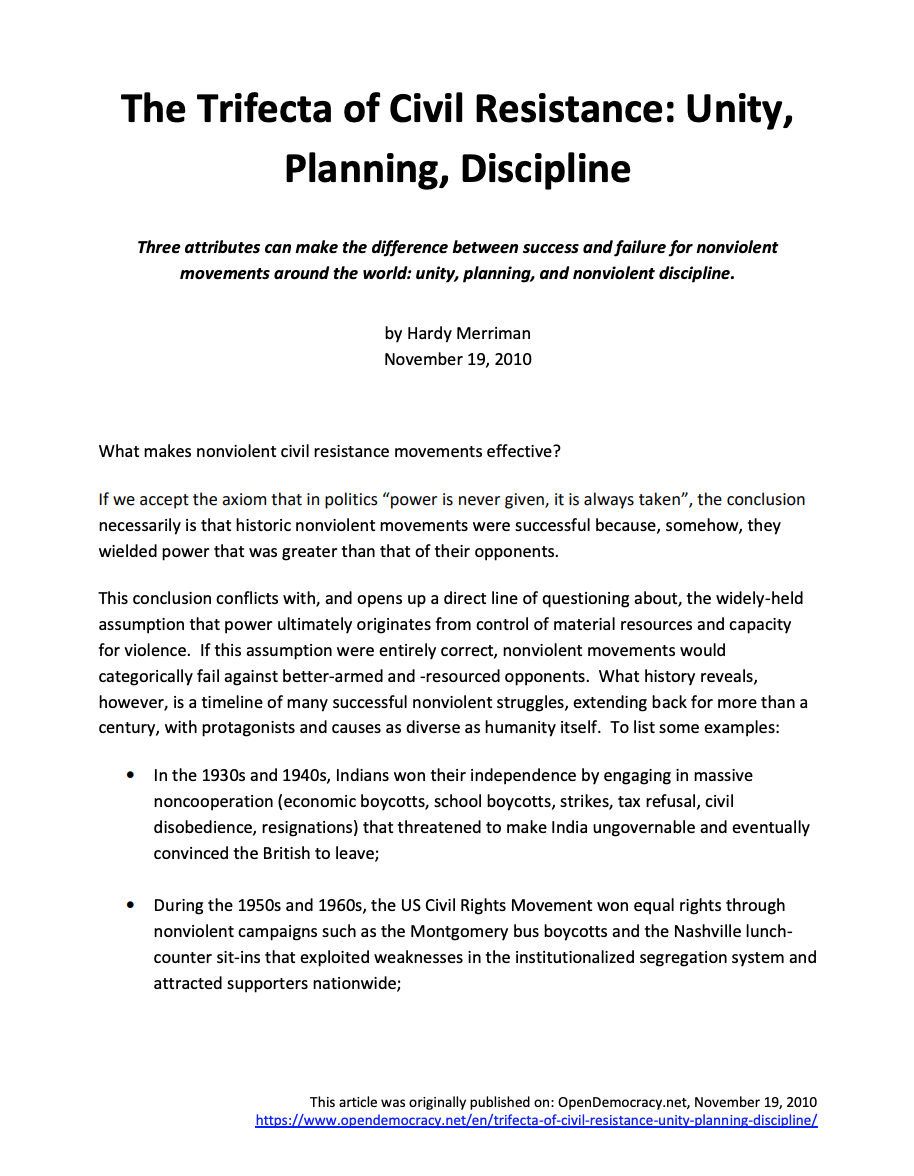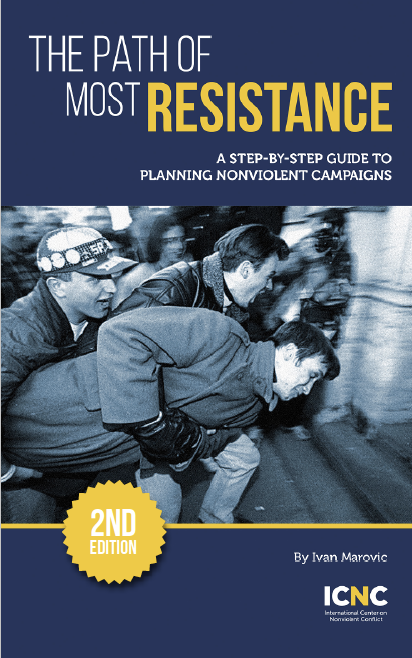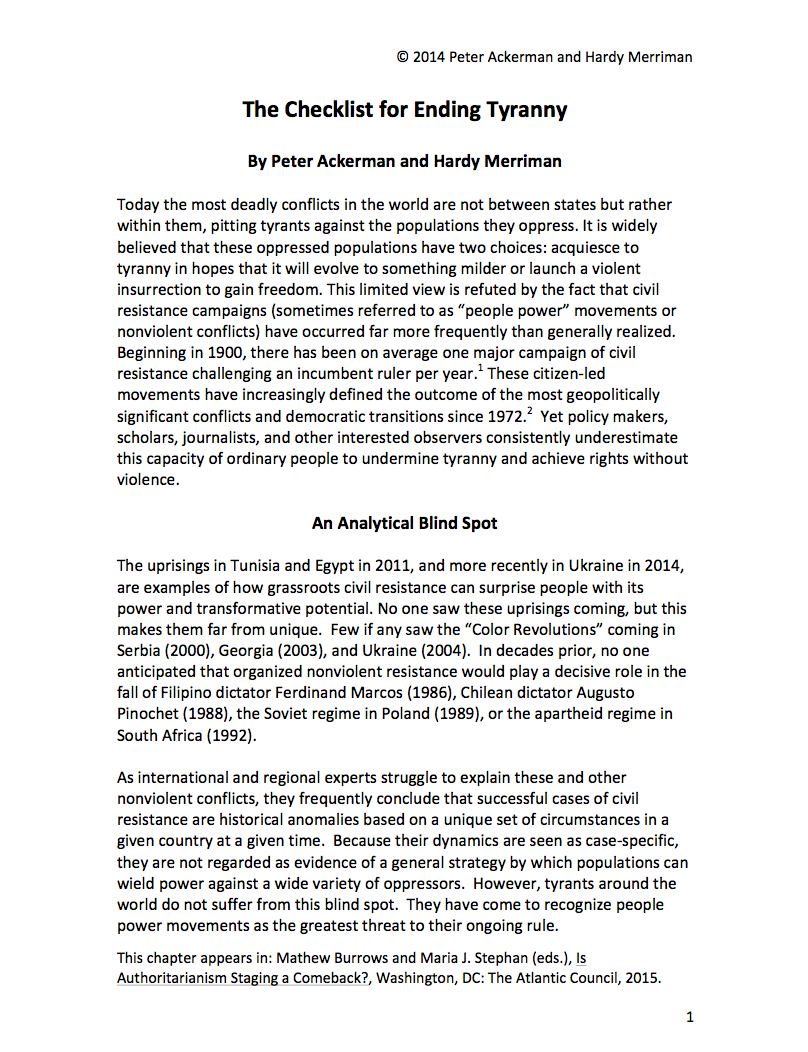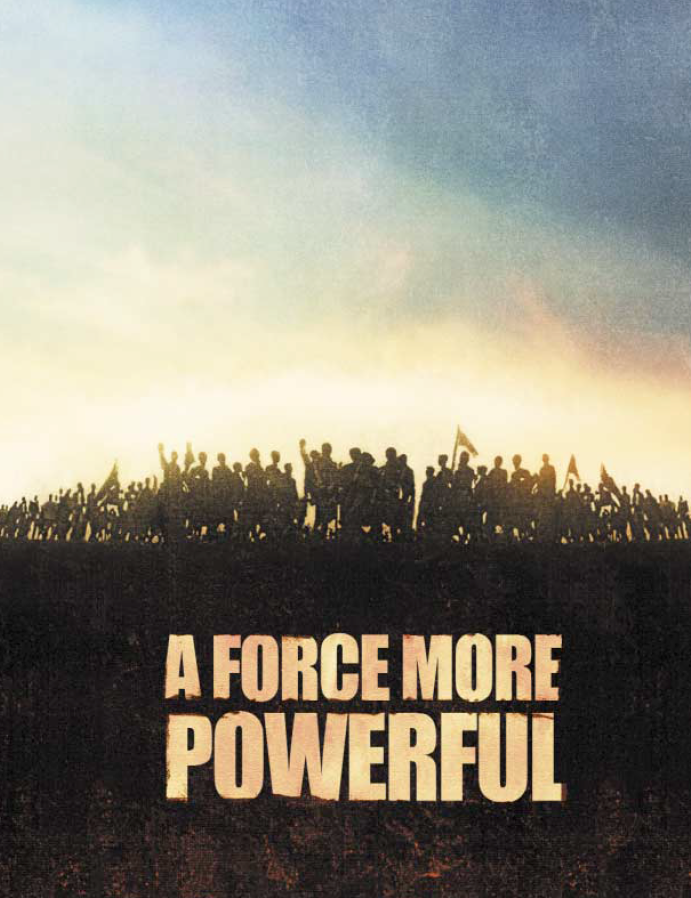Glossary of Civil Resistance
Civil resistance is everywhere. Virtually every country and society in the world has instances in their past—and sometimes their present—where people protested, boycotted, petitioned, went on strike, or engaged in other nonviolent actions to advocate for their rights. No one culture created civil resistance or owns it. It belongs to all of humanity.
Yet, this history is frequently unrecognized and not taught in schools. Resources to learn how to successfully organize, strategize, and engage in nonviolent struggle are often not widely available. In fact, some governments deliberately suppress or ban this knowledge.
The study of civil resistance focuses on how people can fight for—and win—their rights, freedom, and justice, without violence. There is great value in developing and sharing best practices, research, and educational resources about how to do this. The more people know, the more effective they can be as they adopt nonviolent strategies to challenge oppression.
The amount of English-language literature in this field has rapidly expanded in recent decades, and demand for materials in languages other than English has also risen. We created this glossary to help make this knowledge more available to people around the world. Its primary goal is to help with the translation of information on civil resistance from English into other languages. We also believe that non-translators will find value in it, as a great deal can be learned by reading the definitions and commentary on each term.
February 2021
Published by ICNC
